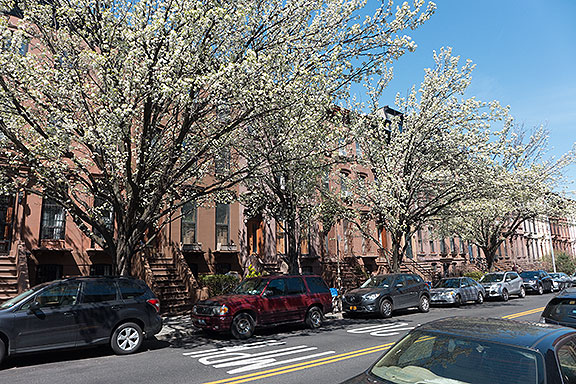
Spring in Brooklyn!
I’ve gone away for most of April, dividing the time between New York and Mexico City. In both places I’m participating in conferences, but I’ve left enough time for fun to feel like some of it is vacation too. I’m lucky that my current income from Shaping SF and USF come with a lot of flexibility in terms of how I spend my time and get the work done (and thanks to the USF Teacher Development Fund, I’m getting some support for my costs).
I loved my 11 days in New York. Spring teased us on Wednesday April 5, going away again for a few days before returning for real on April 11 or so. By the time we left for Mexico City, trees all over the city were blooming, and New Yorkers were emerging from their long winter gloom to revel in the warm sunshine, remembering what an amazing city they live in. I got to visit a few old friends, even enjoying another 60th birthday party, and I walked over 90 miles around the City.
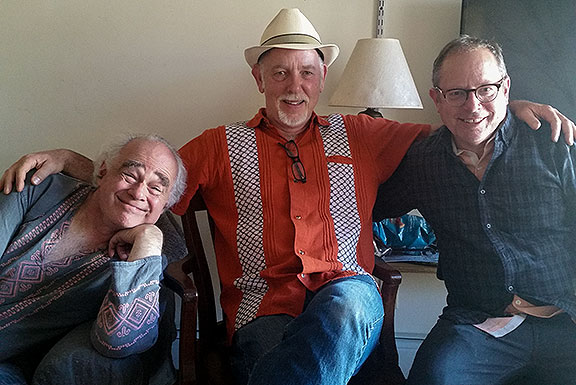
Chris Winks, me, and Mark Leger, at Mark’s 60th birthday in Bushwick… last time we were all together was probably in 1983 at a Processed World meeting!
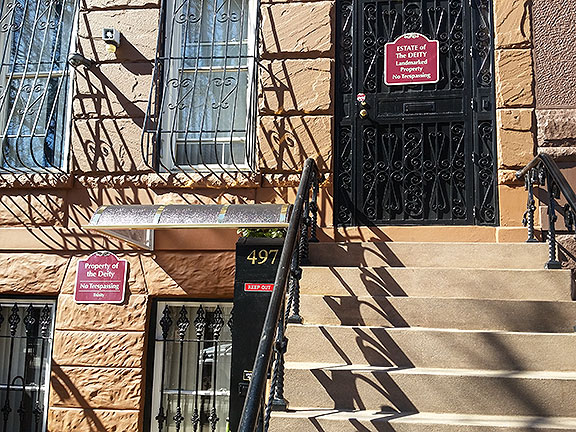
On the way to Mark’s in Bed-Stuy we came upon this “Property of the Deity”!
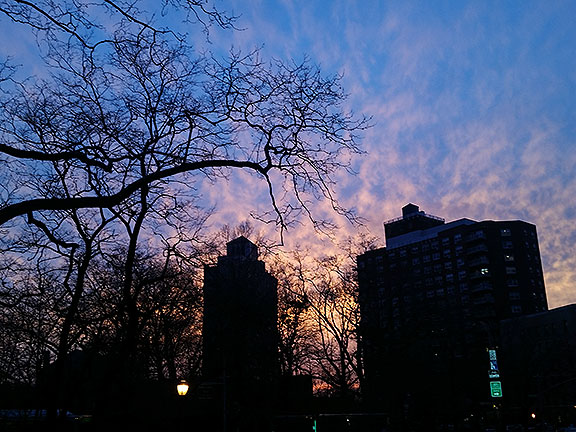
Took this photo on April 5 at Grand Army Plaza after a lovely day, but the next three were very wintry.
But the official reason for my journey to New York was to attend the conference commemorating the 150th anniversary of the publication of Marx’s Capital. I didn’t know what to expect exactly, but I was happy to be invited and prepared my talk based on two previous blog posts here, giving it the title “Start Talks Now on Work Reduction!” Too many presentations were rather dry to say the least, and I was surprised that so many of the speakers read their pieces, on such vital topics as “Late Marx and the Conception of ‘Accumulation of Capital’”, “Value Forms and the Structure of the Capitalist System,” “Conceptualizing the Future: Marx’s Value Theory and the Contours of a Socialist Economy.” On the other hand, the reason I was excited to go was to meet Harry Cleaver and David Harvey and reconnect with old friends like Silvia Federici and George Caffentzis, and Nick Dyer-Witheford and Kevin Van Meter. I was also glad to find my Bay Area colleagues there, Dorothy Kidd and Robert Ovetz. This constellation of folks, along with the organizers who hosted us at Hofstra University, gave the two day event a strongly “autonomist” flavor, and allowed Cleaver and Federici to put their stamp on the proceedings with strong plenary talks at the conclusion of each day. Silvia gave a beautifully eloquent speech and reinforced her vital contribution to Marxist theory by emphasizing the near absence of interest in women and reproduction in Marx’s writings. Cleaver was able to push aside the narrow linguistic parsing of Marx’s writings to remind us that the much-discussed term “value” really means work—work under the domination of capital.
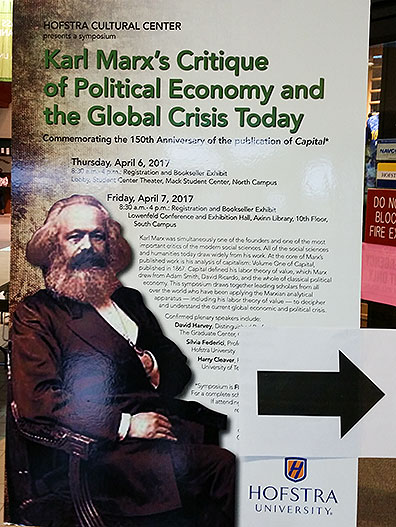
Thataway!
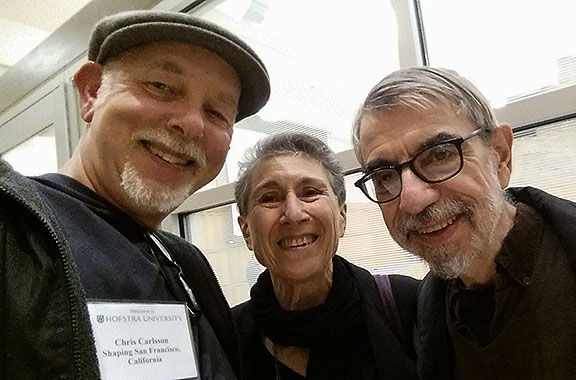
Me with Silvia Federici and George Caffentzis.
During the 2nd day’s panels, Robert Ovetz led a discussion that came to revolve around academic labor, in part because Michael Pelias presented too, and he is part of the long-running lockout of adjunct professors at Long Island University. It was interesting to realize that nearly everyone at the conference was a university professor, about 75% adjuncts. Robert gave a short presentation about the use of online education to reduce the power and leverage of tenured professors, but noted that the rise of contingent adjuncts had accompanied the growing effort to automate higher education through MOOCs and other online schemes. Painful splits between tenured, unionized faculty and the mostly unorganized adjunct labor force were discussed, esp. in light of the LIU struggle, where the permanent faculty voted against the interests of their unionized adjuncts in pursuit of their own security and stability.
Earlier in the day, Nick Dyer-Witheford and his colleagues from the University of Western Ontario had argued that Artificial Intelligence confronts the labor theory of value and makes it difficult to stick to the old paradigms. His colleague from Sweden, Atle Mikkola Kjosen, went all the way into a bleak view that so-called perfect machines could really supplant most living labor. Nick emphasized that while it’s true that artificial intelligence and cybernetics has confounded the labor theory of value (as he argued persuasively in his book Cyber-proletariat), he concluded that we are at a crossroads. In one direction is the artificial intelligence that capital wants to impose on us. The other direction is towards a technology shaped and controlled by workers and the society in which it is embedded. In this sense, his argument is not just about artificial intelligence, but really a call to arms for a new politics of technics more broadly, one that builds on the social movements that have rejected nuclear power, western medicine’s hegemony, chemically-soaked agriculture, etc.
I argued in Nowtopia that it is precisely these movements that represent a contestation over the direction of the “General Intellect.” The shape of science and technology has been dominated by the needs of capital and accumulation for more than a century, but the appropriation of scientific knowledge and technical skills by more and more so-called “average folks” makes technological directions much more susceptible to social struggle, to genuine conflicts over possible futures. The coming march on April 22 in defense of “science” presents an interesting opportunity to go beyond the banal defense of empirical data and an unchallenged scientific method to argue for an active, creative role for technical and scientific workers in choosing new paths to shape the invisible infrastructure of our lives. I’m not advocating that these specialists should have unchecked power either, but that their capacity for inventing new ways use science and technologies on behalf of human and planetary well-being should not be overlooked. I hope for a more robust discussion of these possibilities going forward, and the work Nick and his colleagues presented at the conference seem to be a vital part of that inquiry.
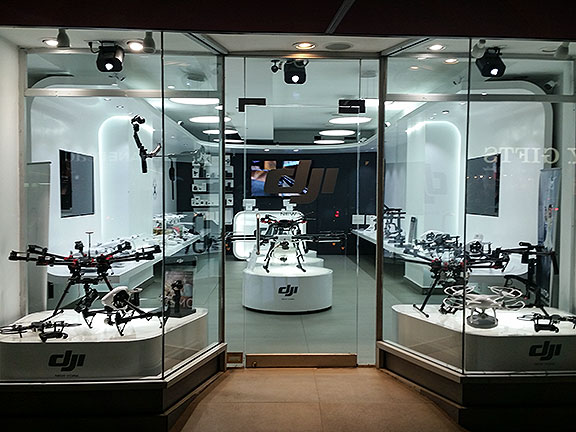
A drone store?!? in Manhattan…
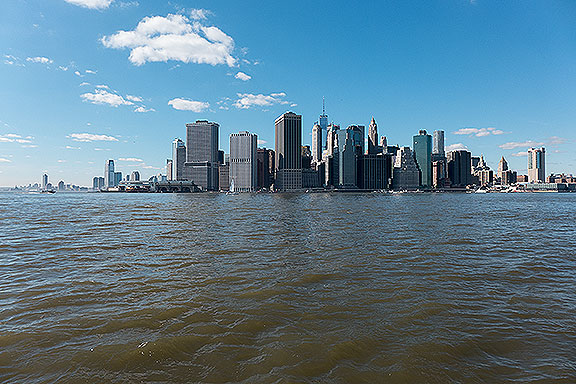
Manhattan from the new as yet-unfinished Brooklyn Bridge Park.
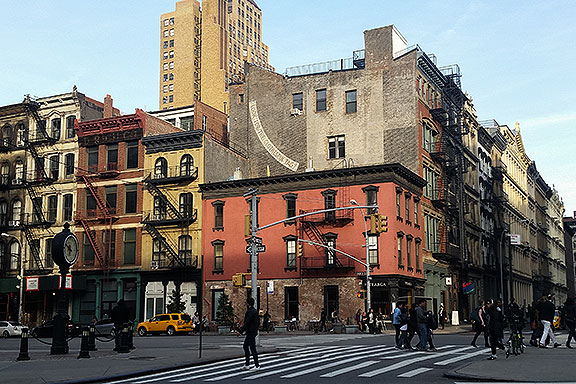
A typical lower Manhattan scene…
We even took in a Broadway play called “Sweat” which turned out to be a timely contributor to current events. It’s set in Reading, Pennsylvania among a multi-racial blue-collar community that at the outset in 2000 are still working union jobs at a local plant. Over the course of the play, featuring a stellar ensemble of nine actors, workplace friendships fracture when the factory owners demand 50% wage reductions and move half their equipment to Mexico in the middle of the night to take advantage of NAFTA incentives. Racial tensions crash into immigration scapegoating, while the newly promoted line supervisor is forced to lock-out her former best friends. A savage beating of the local bar’s busboy lands two protagonists in jail; eight years later we meet them in the other part of the play when they are being closely scrutinized by their probation officer and they recount the accidental and painful meeting they had with each other. The tension between formerly close friends is never resolved, and the play ends with a plea to take care of each other, without falling into a trite happy ending.
Live theater is very different than other forms, and I walked out afterwards feeling like the show had been too narrow. But after a couple of days, finding that various scenes and exchanges were replaying in my head, I decided “Sweat” deserved its Pulitzer Prize, and I hope it has a good long run in repertory houses across the rust belt where it really belongs!
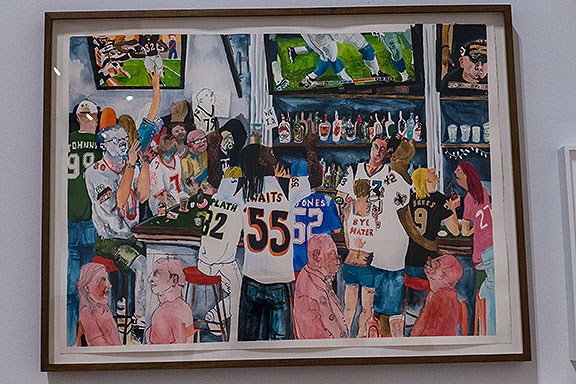
This painting at the Whitney is by Celeste Dupuy-Spencer. Title: “It’s a Sports Bar But It Used to be a Gay Bay”
We also visited a bunch of museums, culminating in a quick visit to the NY MOMA where we were totally impressed by their new exhibition called “Unfinished Conversations.” It was full of new art, super interesting, on point, and brilliantly executed. Other stops earlier were at the Whitney by the Highline, the Frick (great Rembrandts and a current show of J.W.M. Turner’s paintings of historic and imaginary ports of the past), and I ducked into the Interference Archive show in Brooklyn too.
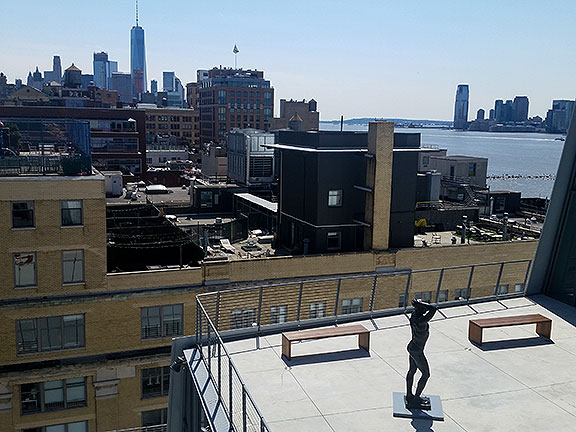
View south from the roof of the new Whitney.
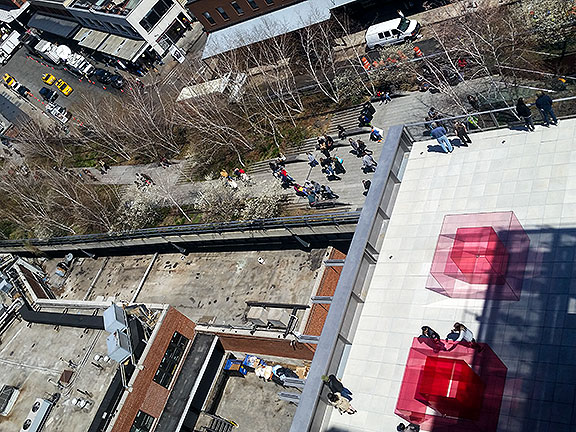
View down from the Whitney roof of the Highline park.
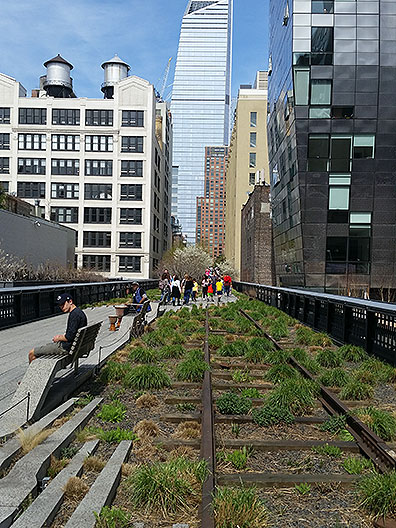
On the Highline.
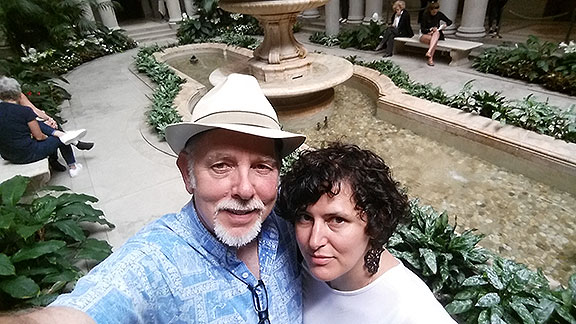
Enjoying Rembrandts and JWM Turner at the Frick Collection.
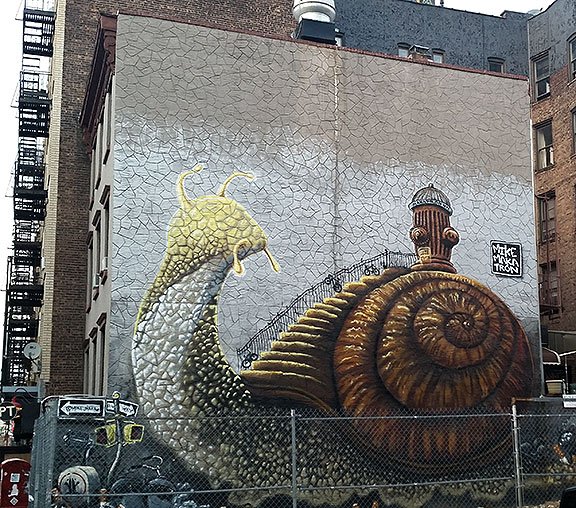
Street art is often superior to what’s in museums…
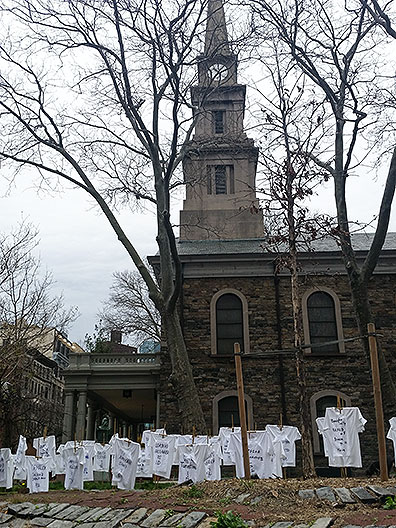
At St. John’s Church the yard is full of t-shirts commemorating victims of gun violence.

In Brooklyn you can find a ton of community gardens… this one was protesting plans to remove its elegant willow…
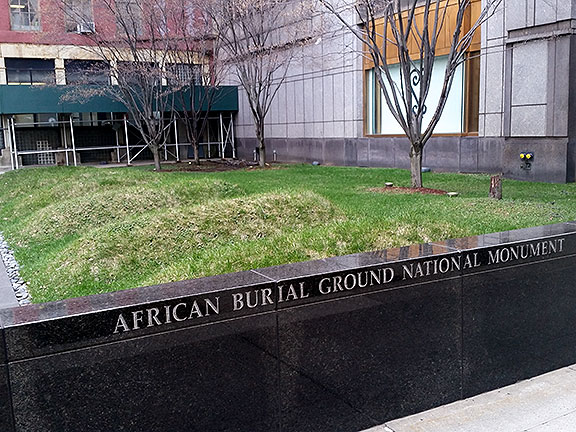
Came upon this moving monument… the African Burial Ground, established after hundreds of remains were discovered when building a nearby federal building.
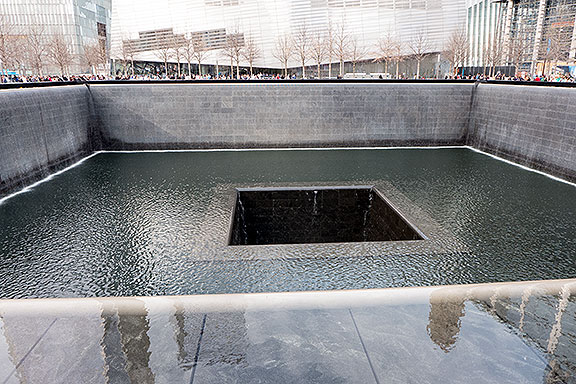
The water pouring into the holes at the bottom of the squares once occupied by the twin towers… the only noncommercialized aspect of this crass monument!
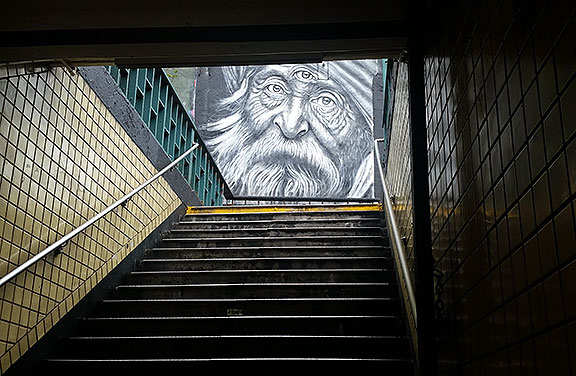
Next to the Liz Christy Garden in Manhattan on Houston.
Now I’m in Mexico City where the 6th annual World Bike Forum begins tomorrow night. I’m excited to see friends from Brazil, Chile, Peru, Ecuador, Argentina, and of course here in Mexico. I’ll be speaking on Friday morning at 11:30.
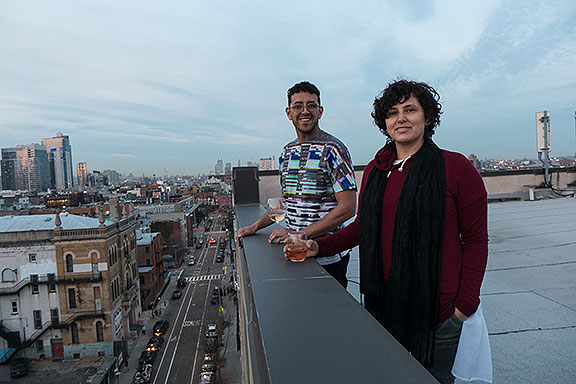
We visited Nate Miller at his amazing pad in Williamsburg with this great roof!
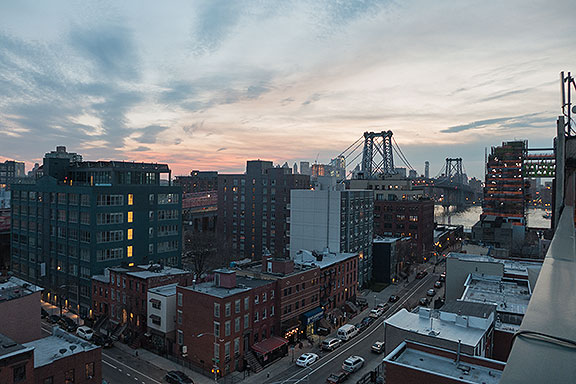
Roof view at dusk!
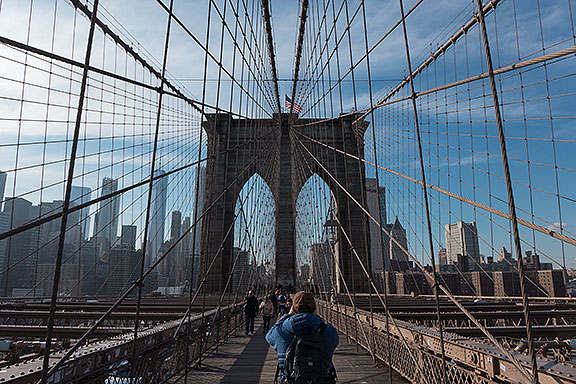
Gotta walk across the Brooklyn Bridge!

One of tons of new highrises…
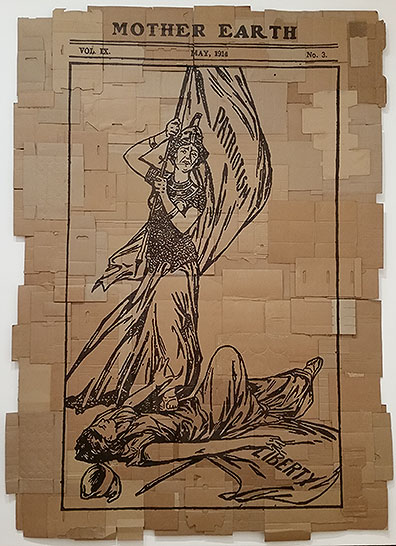
at NY MOMA, Emma Goldman’s “Mother Earth” appeared as fresh art!
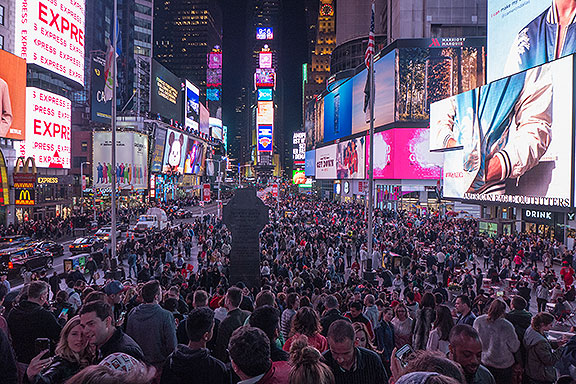
Times Square is just weird.
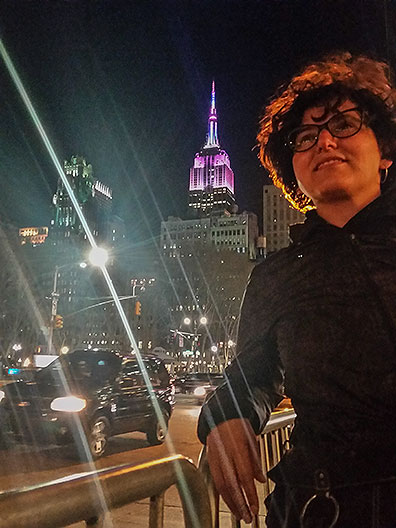
Darn photogenic place!












Leave a Reply